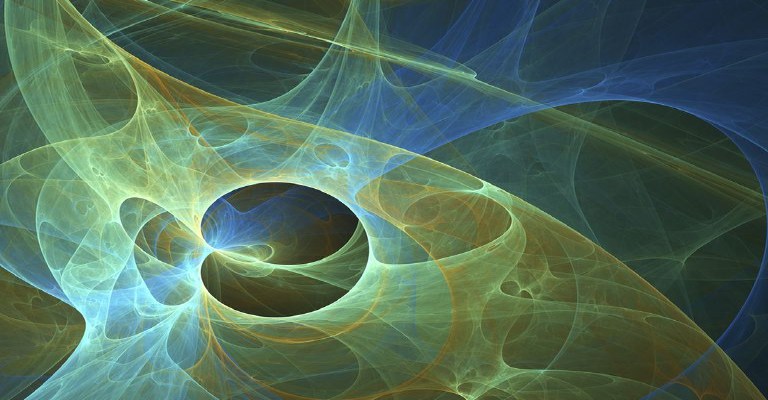
String theory vs. M-theory: A showdown to explain our universe

Can M-theory bring the various string-theory candidates together?
By Paul Sutter
In the early 1990s, string theory was in a bit of a theoretical pickle. For decades, theorists had poured their hearts and minds into the idea that the fundamental building blocks of reality are tiny, vibrating strings. This was a potentially revolutionary idea, capable of uniting all the forces of nature and all the building blocks of matter into a single, harmonious picture.
The pickle, however, was that there were five independent candidates for string theory, each one looking radically different than the others. Which one was right?
Five's company
The five different string theories had a few commonalities. For one, they all involved strings. They also all required our universe to have 10 total dimensions: the usual three spatial dimensions, one for time and six more compact dimensions that are tiny and curled up on themselves at submicroscopic scales.
And in all the theories, the ways strings vibrate give rise to the richness of our physical world, from the forces of nature to the building blocks of matter to physical constants themselves. But when it comes to physical theories, details matter, and the five competing string models differed in the details. Some theories only had closed loops of strings, while others allowed open, wiggling strings. Some theories only allowed vibrations to travel in one direction on the strings, while others allowed both. And some theories were combinations of other theories.
For reference, in case you're curious, the names of the five string theories are: Type 1, Type IIA, Type IIB, SO(32) heterotic, and E8xE8 heterotic.
They obviously couldn't all be correct descriptions of nature, but which one was the "real" string theory, and which were the phonies? The problem was (and still is today) that string theory isn't complete — there's no such thing as the final equations of string theory, something that could be printed on a t-shirt, that describes the theory in the same way that we have the Einstein equations for gravity or the Maxwell equations for electromagnetism.
We only have approximations that we hope — but can't prove — are close to the actual theory. And so the five string theories represent five different approximations, with no way of being able to decide which one is best.
Duality of the fates
And then 1995 happened, when prominent theoretical physicist Edward Witten gave a talk at the annual string theory conference. In the talk, he offered a radical suggestion: perhaps the five string theories weren't so different after all.
It turns out that there are interesting connections, called dualities or symmetries, among the five theories. For example, something we don't know about strings is how strongly they like to interact. But if you take, say, Type 1 string theory and ramp up its interaction strength, you end up with the weaker version of SO(32) heterotic.
And there's more. Sometimes strings can wind around a tiny, curled-up dimension a certain number of times with a certain momentum, but the duality of that has the number of windings and the momentum flipped. Type IIA and Type IIB string theories are related by such a duality.
These dualities suggest that the five string theories are all related, somehow, and are probing something much, much deeper. That deeper thing can be guessed at by following all the dualities. By attempting both dualities on the five string theories, sometimes you get links to one of the other five, and sometimes you get dualities to somewhere new.
What is that "somewhere new"? Edward Witten suggested calling it "M-theory", with the "m" open to interpretation (e.g., "mother," "mystery" or "membrane") until such time as we actually understand it.
Big branes
M-theory is like an uber-theory of strings, showing how all five string theories are really just small corners of a much larger, and much more mysterious, theory. We used to think of the five string theories as separate planets, with our theoretical and mathematical explorations confined to little islands on those planets. But M-theory revealed that all those islands actually shared the same, much larger, planet all along.
One curious feature of M-theory (the little that we know about it, that it) is that what we consider string theory appears to be just a low-energy approximation of the real deal. And that real deal requires not 10 but 11 dimensions in our universe.
What's more, the fundamental object of reality is no longer the string but the d-brane. "Brane" is just a fancy word for multidimensional vibrating things, with the letter "d" signifying the dimension, giving us everything from 1-branes (strings) to 2-branes (sheets) to 3-branes (blobs) and more.
For the most part, these branes lie low and mostly just act like strings, with the eleventh dimension not playing much of a role in the grand cosmic symphony.
Beyond that, there isn't much known about M-theory. String theorists usually work in one of the five usual regimes, since they've been so well studied for decades, and the additional dimension and the introduction of branes makes the already-fiendish mathematics of string theory that much worse. Still, theorists continue to probe at the edges, hoping to someday give a full name to the "m" in M-theory.
Related: Why string theory persists — despite the knotty physics
Related: The history and structure of the universe (infographic)
Paul M. Sutter is an astrophysicist at SUNY Stony Brook and the Flatiron Institute, host of Ask a Spaceman and Space Radio, and author of "Your Place in the Universe." Sutter contributed this article to Space.com's Expert Voices: Op-Ed & Insights.